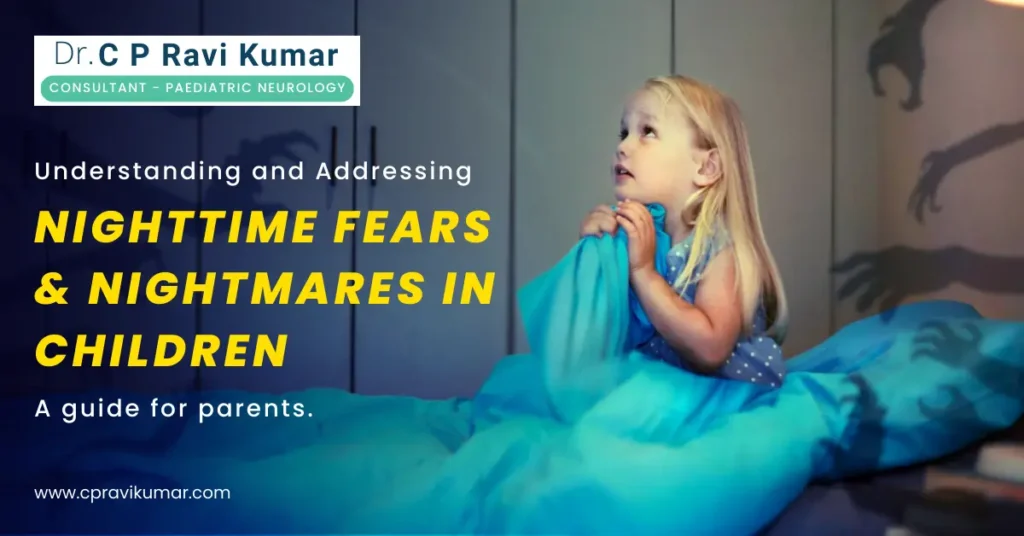
As children navigate the complexities of emotional and cognitive growth, many experience nightmares and night terrors. These episodes, often accompanied by crying, difficulty returning to sleep, or sudden awakenings, can be distressing for both the child and their parents. Although these issues are a common part of childhood development, understanding their causes and knowing how to manage them can significantly improve the nighttime environment. This article explores the causes of nightmares and night terrors, their impact on children, and provides helpful tips for parents to ensure their children have more peaceful nights.
Children often experience nightmares, which are disturbing dreams that occur during REM (rapid eye movement) sleep. Throughout the night, children cycle between REM and non-REM sleep, spending more time in REM during the later stages, which increases the likelihood of nightmares in the early morning. Research shows that at least 70% of young children experience nightmares occasionally, with the frequency of these episodes rising around the age of ten (Gauchat et al., 2014). Children also tend to dwell on their nightmares throughout the day. A study found that children aged 7 to 9 listed “scary dreams” as one of their top three stressors (Muris et al., 2000). In a study involving over 6,000 elementary school students, those who had frequent nightmares were more likely to suffer from insomnia, hyperactivity, difficulty concentrating, and poor academic performance (Li et al., 2011). Additional research indicates that adolescents who experience regular nightmares are at greater risk for issues such as anger, attention problems, and symptoms of depression (Liu et al., 2022; Yang, 2022).
Causes of Nightmares:
Nightmares are a common symptom of post-traumatic stress disorder (PTSD). Children who have encountered traumatic events, such as abuse, domestic violence, natural disasters, or the death of a loved one, are at a higher risk of experiencing frequent and intense nightmares (Secrist et al., 2019). Moreover, exposure to television, particularly frightening content, can contribute to an increase in the frequency of nightmares, with such media often influencing the child’s dreams (Muris et al., 2000; Stephan et al., 2012).
A comprehensive study conducted in the United Kingdom (Thompson et al., 2015) revealed that 12-year-olds who frequently experience nightmares are at an increased likelihood of developing psychotic symptoms, such as hallucinations (perceiving things that are not real) and paranoid delusions (e.g., believing others intend to harm them), compared to their peers without nightmares. Although the risk is not significant, it is slightly elevated.
What can we do about Nightmares:
- Parents should reassure children after a nightmare by assuring them of their safety, encouraging open discussion about the dream, and emphasizing that dreams are not real. This may include turning on the light and demonstrating that there are no threats in the room.
- Psychologists highlight the importance of regulating our emotional reactions to a child’s distress. It is essential not to mirror the child’s anxiety or show signs of being upset, as children are likely to absorb these emotions and misinterpret the situation.
- Physical affection helps to lower stress levels and ease separation anxiety (Panskepp, 2006).
- During the day, collaborate with your child to create stories in which the main character, such as their favorite hero or fictional figure, overcomes particular fears. This technique, called story desensitization, assists children in gradually confronting their fears by addressing them in manageable stages (King et al., 2001).
Conclusion :
Nighttime fears and nightmares, while often regarded as minor, can have a considerable effect on an individual’s sleep quality, emotional health, and overall well-being. Identifying the root causes, whether they result from stress, trauma, or underlying medical conditions, is essential for effectively addressing these issues. By utilizing practical coping strategies, such as relaxation techniques, cognitive-behavioral therapy, or seeking professional support when needed, individuals can regain control over their sleep and reduce the distressing symptoms linked to nighttime fears and nightmares.
REFERENCES :
- Gauchat A, Séguin JR, Zadra A. 2014. Prevalence and correlates of disturbed dreaming in children. Pathol Biol (Paris). 62(5):311-8.
- Muris P, Merckelbach H, Gadet B, and Moulaert V. 2000. Fears, worries, and scary dreams in 4- to 12-year-old children: their content, developmental pattern, and origins. J Clin Child Psychol. 29(1):43-52.
- Li SX, Yu MW, Lam SP, Zhang J, Li AM, Lai KY, and Wing YK. 2011. Frequent nightmares in children: familial aggregation and associations with parent-reported behavioral and mood problems. Sleep. 34(4):487-93.
- Liu X, Liu ZZ, Liu BP, Jia CX. 2022. Nightmare frequency and psychopathological problems in a large sample of Chinese adolescents. Soc Psychiatry Psychiatr Epidemiol. 57(4):805-816.
- Secrist ME, John SG, Harper SL, Conners Edge NA, Sigel BA, Sievers C, Kramer T. 2019. Nightmares in Treatment-Seeking Youth: the Role of Cumulative Trauma Exposure. J Child Adolesc Trauma. 13(2):249-256.
- Muris P, Merckelbach H, Gadet B, and Moulaert V. 2000. Fears, worries, and scary dreams in 4- to 12-year-old children: their content, developmental pattern, and origins. J Clin Child Psychol. 29(1):43-52.
- Stephan J, Schredl M, Henley-Einion J, and Blagrove M 2012. TV viewing and dreaming in children: The UK library study. International Journal of Dream Research. 5(2): 130–133.
- Thompson A, Lereya ST, Lewis G, Zammit S, Fisher HL, Wolke D. 2015. Childhood sleep disturbance and risk of psychotic experiences at 18: UK birth cohort. Br J Psychiatry. 207(1):23-9.
- Panksepp J. 2001. Affective Neuroscience: The Foundations of Human and Animal Emotions. New York: Oxford University Press.
- King NJ, Heyne D, Gullone E, and Molloy GN. 2001. Usefulness of emotive imagery in the treatment of childhood phobias: clinical guidelines, case examples and issues. Counselling Psychology Quarterly 14: 95-101.
